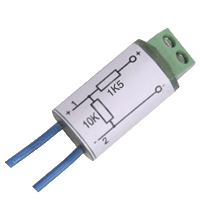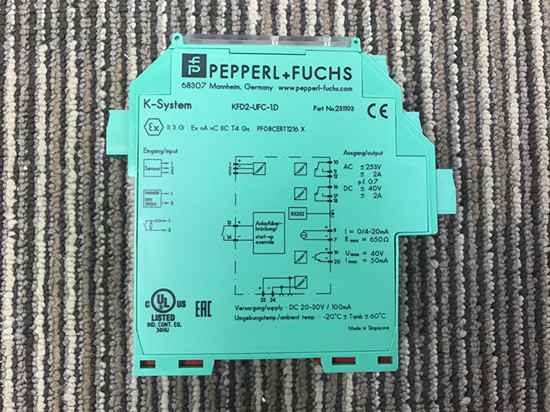Pepperl+Fuchs Group Germany: +49 621 776 2222 4 Refer to 'General Notes Relating to Pepperl+Fuchs Product Information'. USA: +1 330 486 0002 Singapore: +65 6779 9091 www.pepperl-fuchs.com pa-info@us.pepperl-fuchs.com pa-info@sg.pepperl-fuchs.compa-info@de.pepperl-fuchs.com Solenoid Driver Output characteristics Characteristic Curve Ri Us U Us. Introducing the world's first extended range proximity sensor worthy of carrying the Pile Driver name: the new X-series Pile Driver from Pepperl+Fuchs, 1600 Enterprise Parkway, Twinsburg Ohio, 44087 USA Phone +1 330 425 3555 Fax +1 330 425 4607 sales@us.pepperl-fuchs.com Contact us at 330-425-3555.
- Drivers Pepperl Fuchs Hl
- Drivers Pepperl Fuchs Corneal
- Pepperl Fuchs Nj15
- Drivers Pepperl Fuchs Xerox
- Pepperl Fuchs Foundation Fieldbus
Show EOL distros:
The Pepperl+Fuchs R2000 laser range finder driver package
- Maintainer: Denis Dillenberger <denis.dillenberger AT gmail DOT com>
- Author: Denis Dillenberger <denis.dillenberger AT gmail DOT com>
- License: BSD
- Source: git https://github.com/dillenberger/pepperl_fuchs.git (branch: master)
The Pepperl+Fuchs R2000 laser range finder driver package

- Maintainer: Denis Dillenberger <denis.dillenberger AT gmail DOT com>
- Author: Denis Dillenberger <denis.dillenberger AT gmail DOT com>
- License: BSD
- Source: git https://github.com/dillenberger/pepperl_fuchs.git (branch: master)
Used by (1)
The Pepperl+Fuchs R2000 laser range finder driver package
- Maintainer status: maintained
- Maintainer: Denis Dillenberger <denis.dillenberger AT gmail DOT com>
- Author: Denis Dillenberger <denis.dillenberger AT gmail DOT com>
- License: BSD
- Bug / feature tracker: https://github.com/dillenberger/pepperl_fuchs/issues
- Source: git https://github.com/dillenberger/pepperl_fuchs.git (branch: master)

The Pepperl+Fuchs R2000 laser range finder driver package
- Maintainer status: maintained
- Maintainer: Denis Dillenberger <denis.dillenberger AT gmail DOT com>
- Author: Denis Dillenberger <denis.dillenberger AT gmail DOT com>
- License: BSD
- Bug / feature tracker: https://github.com/dillenberger/pepperl_fuchs/issues
- Source: git https://github.com/dillenberger/pepperl_fuchs.git (branch: master)
Used by (1)
Jenkins jobs (7)
The Pepperl+Fuchs R2000 laser range finder driver package
- Maintainer status: maintained
- Maintainer: Denis Dillenberger <denis.dillenberger AT gmail DOT com>
- Author: Denis Dillenberger <denis.dillenberger AT gmail DOT com>
- License: BSD
- Bug / feature tracker: https://github.com/dillenberger/pepperl_fuchs/issues
- Source: git https://github.com/dillenberger/pepperl_fuchs.git (branch: master)
Jenkins jobs (9)
The Pepperl+Fuchs R2000 laser range finder driver package
- Maintainer status: maintained
- Maintainer: Denis Dillenberger <denis.dillenberger AT gmail DOT com>
- Author: Denis Dillenberger <denis.dillenberger AT gmail DOT com>
- License: BSD
- Bug / feature tracker: https://github.com/dillenberger/pepperl_fuchs/issues
- Source: git https://github.com/dillenberger/pepperl_fuchs.git (branch: master)
Contents
- Pepperl+Fuchs R2000 Driver
- Usage with ROS
- Basic usage without ROS
This is the documentation of a driver for the Pepperl+Fuchs OMDxxM-R2000-B23 laser range finder.
.jpg)
The driver is based upon the widespread boost asio library (http://www.boost.org)
The driver comes as a library, which contains the actual driver, and has additionally a ROS-Node interface to the Robot Operating System (http://www.ros.org), which can be used optionally.

Sensor information
The new 2-dimensional laser range sensor operates using tried-and-tested Pulse Ranging Technology and boasts a range of unique features. For example, the device features a laser emitter with a visible red light. Users can see where the scanning level is and can align the device accordingly. Thanks to its classification in laser class 1, the device can be used in all workspaces, without posing a health hazard to people. The device has a measuring angle of 360° and boasts a measuring frequency of up to 250,000 individual measurements per second. Combined with a scanning frequency of up to 50 Hz, the device is extremely well suited to highspeed applications. Another feature is the display integrated in the lens aperture. (from the official datasheet with permission from Pepperl+Fuchs)
Official Website: http://www.pepperl-fuchs.com/global/en/classid_53.htm?view=productdetails&prodid=43828#overview
Datasheet OMD10M-R2000 (en): http://files.pepperl-fuchs.com/selector_files/navi/productInfo/edb/232934_eng.pdf
Datasheet OMD30M-R2000 (en): http://files.pepperl-fuchs.com/selector_files/navi/productInfo/edb/263095_eng.pdf
Usage with ROS
The ROS package pepperl_fuchs_r2000 consists of the driver library and a node named r2000_node, which is linked to the library. This is the actual driver node. The dummy_slam_broadcaster is only needed if you want to display the sensors data using the QuickStart method mentioned below.

Published Topics
scan (sensor_msgs/LaserScan) A standard ROS Laserscan message containing the measured data. The message rate per second depends on the scan_frequency parameter.
Parameters
frame_id The frame-ID in the Header of the published sensor_msgs/LaserScan messages
scanner_ip IP or hostname of the laserscanner
scan_frequency The scan frequency (rotation speed of scanner head) in Hz in the range [10;50]
samples_per_scan The number of distances measured per scan/rotation in the range [72;25200]. Only certain values are allowed (see Manual). Examples are 72, 360, 720, 1440, 1800, 3600, 7200, 10080, 25200.
Quick Start
Copy the driver in your ROS workspace and compile it. Set the IP-Address of the scanner in pepperl_fuchs_r2000/launch/gui_example.launch and run the following command:
This starts RViz (http://wiki.ros.org/rviz) and the driver and you should see the measuring output of the scanner.
Basic usage without ROS
There exists a file CMakeLists.txt.NO_ROS_LIB_ONLY in the pepperl_fuchs_r2000 directory. Replace CMakeLists.txt with it to compile the driver without ROS:
This builds a SHARED library which can be used in your program. To build a static library remove the SHARED in the add_library command in the CMakeLists.txt.
The basic usage of the driver library code (C++11 style) is as follows:
More documentation
The driver is commented in doxygen style. You can create a latex and html documentation in the pepperl_fuchs_r2000/doxygen directory by entering the following command in the pepperl_fuchs_r2000 directory:
Durability vs Distance
It's No Longer a Decision
Introducing the world's first extended range proximity sensor worthy of carrying the 'Pile Driver' name - the new X-series Pile Driver. It features the durability you've come to expect from a Pile Driver, but with sensing ranges up to 2.5X beyond industry standards! And unlike competitors' products, which appear to be OK on paper but fail to perform once installed, Pile Driver delivers rock-solid, restriction-free sensing performance.
See how the new X-series Pile Driver's sensing range matches up to the industry's most common plastic and metal-face proximity sensors, including plastic-face 'extended range' models, in the comparison graph below.
If your sensing application averages even one contact-related failure per year, the X-series Pile Driver, at only 35-40% additional cost over an equivalent plastic-face product, will save your company money. By upgrading your problematic sensors, the following cost savings are immediately realized:
Drivers Pepperl Fuchs Hl
- Fewer replacement sensors (by a factor of 20X, or more)
- Reduced maintenance/troubleshooting labor
- Increased machine uptime
- Fewer rejected parts & increased quality
- No scuffing of critical surfaces
- Wider detection area eliminates 'double counts' and 'misses'
- Dramatically reduced internal costs
- Fewer replacement sensor POs
- Less warehouse handling
- Lower inventory
Technical Information & Datasheets
Drivers Pepperl Fuchs Corneal
- Extended Range Inductive Sensors -
X-Series Pile Driver Brochure PDF (2.48 MB)
Contact Us
Ask Our Experts about the X-Series Pile Driver
Telephone: (330) 425-3555
Email: sales@us.pepperl-fuchs.com
Pepperl Fuchs Nj15
- Order Literature from our web site
Drivers Pepperl Fuchs Xerox
Pile Driver Abrasion Test Video
Visit Pepperl+Fuchs' YouTube Channel
Pile Driver Cost Savings Calculator
Pepperl+Fuchs Newsletters
Pepperl Fuchs Foundation Fieldbus
See Our Complete Line of Pile Driver ProductsQ: Were housing sizes increased (from the original Pile Driver) to achieve the extra sensing distance?
A: No. X-series models use the same one-piece, 100% stainless steel housings as standard Pile Drivers.
Q: Were performance sacrifices necessary to achieve the extended range?
A: No. It was critical to match the impact, mechanical shock, vibration, and abrasion immunity standards set by the original Pile Driver.
Q: Are weld immune models available?
A: Yes. A full line of 12 mm, 18 mm, and 30 mm diameter models are available. They feature immunity to both AC and DC weld fields, as well as the industry's most reliable slag resistant coating, Black Armor™.
Q: Can the X-series Pile Driver detect all metals?
A: Yes. In fact, the product family offers some of the industry's longest sensing ranges to stainless steel targets. Like traditional proximity sensors, reduction factors apply for detection of nonferrous metals like aluminum or brass.
Q: If I initiate a motor drive or heavy machinery, will the electrical noise false-trip this product like other 'extended range' metal face sensors I've tried in the past? Is it temperature-stable?
A: Unlike the competition, Pepperl+Fuchs took no design short cuts. Pile Driver's advanced circuitry enables restriction-free mounting, while also offering the industry's best immunity to the effects of industrial noise & temperature extremes.
